Many people who struggle with a mental, emotional, or physical health issue find that navigating daily life with the assistance of a well-trained service dog is much easier.
Service dogs can help their owners in a variety of ways, such monitoring their blood sugar levels or helping them with regular tasks like walking.
Most any dog can be trained to perform service-related tasks, although some breeds are more adept than others.
We have chosen some of the breeds that perform this function best and have highlighted some of their outstanding qualities.
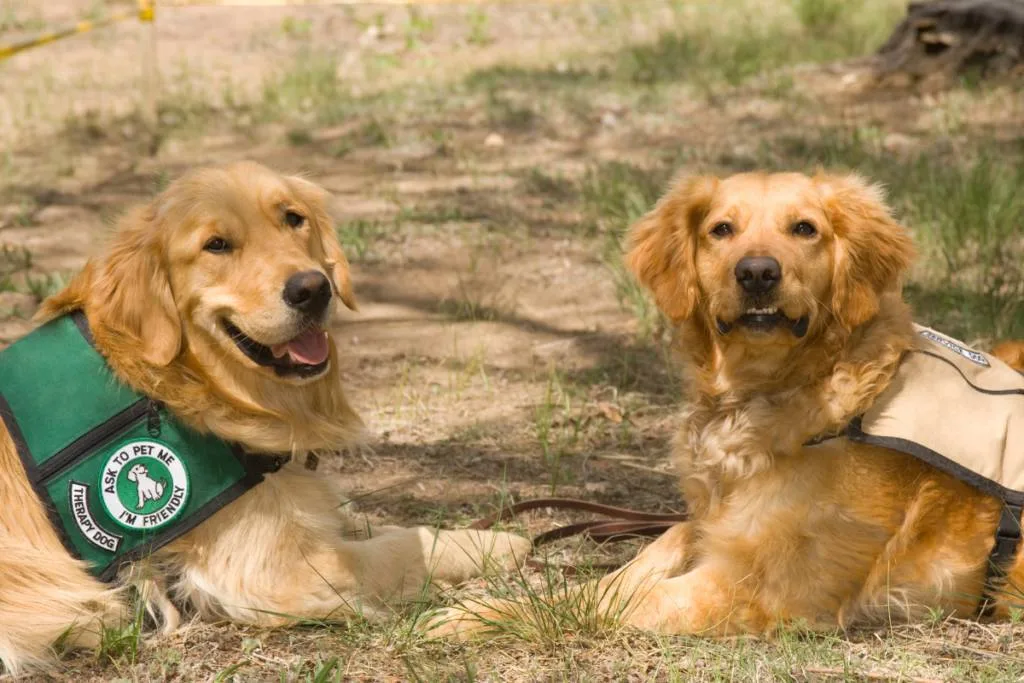
What’s the Difference Between an Emotional Support Dog, a Service Dog, and a Therapy Dog?
It is common for people to be unaware of the distinction between service dogs, emotional support animals, and therapy dogs.
In fact, most people won’t be able to tell you what makes one different from the other – try it and see for yourself!
Thus, a brief explanation of the differences in these roles is necessary.
Emotional Support Dogs
The general expectation of these dogs are that they will support their owners in overcoming emotional difficulties such as depression, PTSD, depression, or other mental health issues.
Some do so by just hanging out with their owner, cuddling and being very affectionate in general, while others intervene during extreme spells of worry or panic.
An emotional support dog may leap up on his owner’s lap and begin giving licks and attention if the owner begins to exhibit signs of an approaching anxiety attack, for instance.
This is frequently effective in preventing the attack and allowing the owner to feel safe and secure.
There are ways to formally designate your dog as an emotional support animal, which may give you further protection from landlords who don’t often accept pets and permit you to take your dog into places that are off-limits to other animals in specific circumstances.
Keep in mind, however, that service dogs are the only animals permitted complete access to various businesses and public locations, albeit regulations differ between establishments.
Therapy Dogs
Therapy dogs are utilized to alleviate anxiety and fear in individuals who are often struggling with trauma.
This covers those who are dealing with relatively unimportant traumas or incidents that have changed their lives.
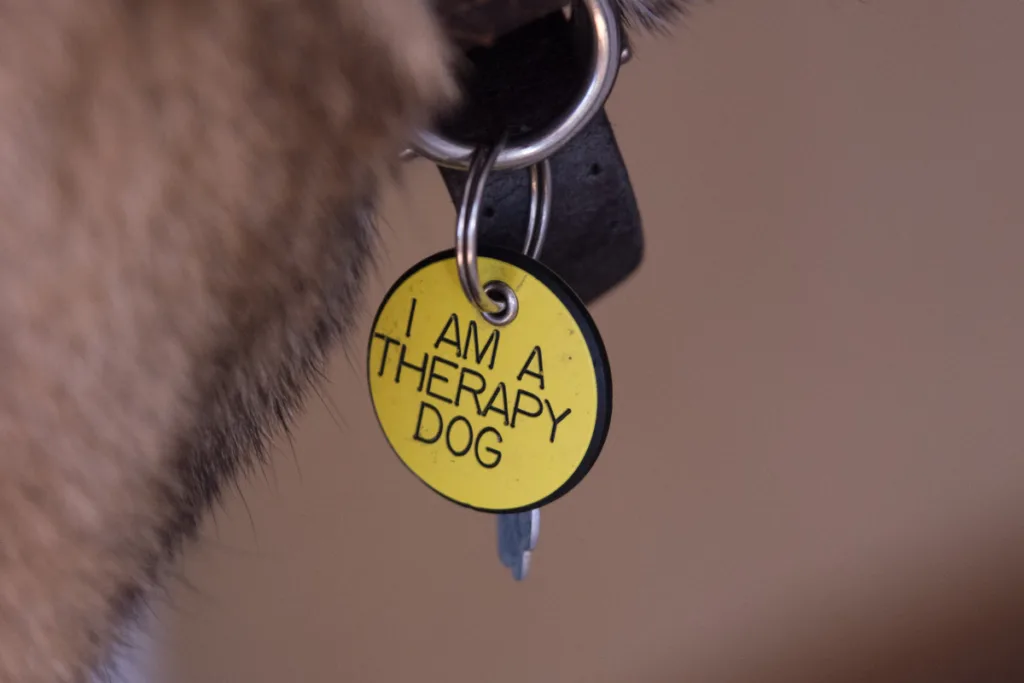
For instance, some therapy dogs operate in airports where they let exhausted or anxious passengers pet them for a short while. Others go to hospitals to cheer up sick people and scared outsiders who frequently have a lot on their thoughts.
Remember that therapy dogs are typically not expected to make their owners feel better; instead, their main responsibility is to lift the spirits of others.
Service Dogs
There are significant differences between service dogs, therapy dogs, and emotional support animals.
Service dogs, as opposed to other dogs, are trained to carry out specialized and vital functions for persons with disabilities, as opposed to other dogs, which mostly add value by simply being being, well, dogs!
When thinking of a service dog, a German Shepherd guiding a blind owner around probably comes to mind, but service dogs have been trained to perform a number of other activities.
Some are programmed to alert deaf owners to ringing doorbells, fire alarms, and other essential sounds, while others assist wheelchair-bound owners access doors.
Some service dogs are taught to keep an eye kids with autism, and may even calm them by stating close while they are in crisis.
The precise classification of your support dog will effect the logistics of having them follow you throughout the day.
For instance, therapy dogs are prevented from entering some establishments, while service dogs are permitted by law to be allowed most anywhere that you go.
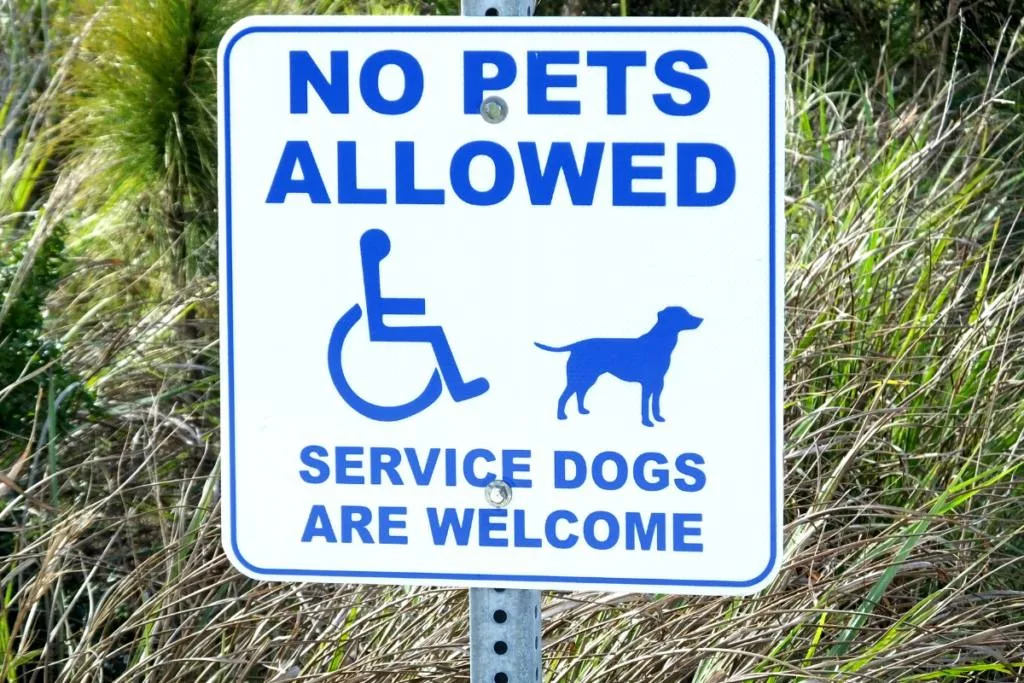
You may also like: Are German Shepherds Good Service Dogs?
What Are the Different Types of Service Dogs?
There are many different kinds of service dogs, and each one has a variety of special qualities and advantages.
Let’s examine each type and the advantages of companion dogs for people with disabilities in more detail.
Dogs That Detect Allergies
These dogs have received specialized training to recognize and alert owners to the aroma of allergens like eggs, gluten, or peanuts.
The prevalence of food allergies is rising, and some people have experienced anaphylactic shock after touching even a very small amount of an allergen.
Before their owner even comes into contact with the allergen, allergy detection dogs can detect the scent.
Children and allergy detection dogs are frequently paired because kids are more likely than adults to have severe allergies.
Both parents and children benefit from the increased independence this gives children.
The majority of allergy detection canines wear vests with pockets for prescriptions and medical records.
Most often the vests will have a patch instructing first responders to check their pockets in case of an emergency.
Service Dogs for Autism
Autism service dogs are trained to assist people in navigating social situations and are frequently paired with children.
Often, autistic individuals struggle to connect with others and read social cues.
Dogs are the ideal conversation starters and can give autistic people a sense of security and predictability.
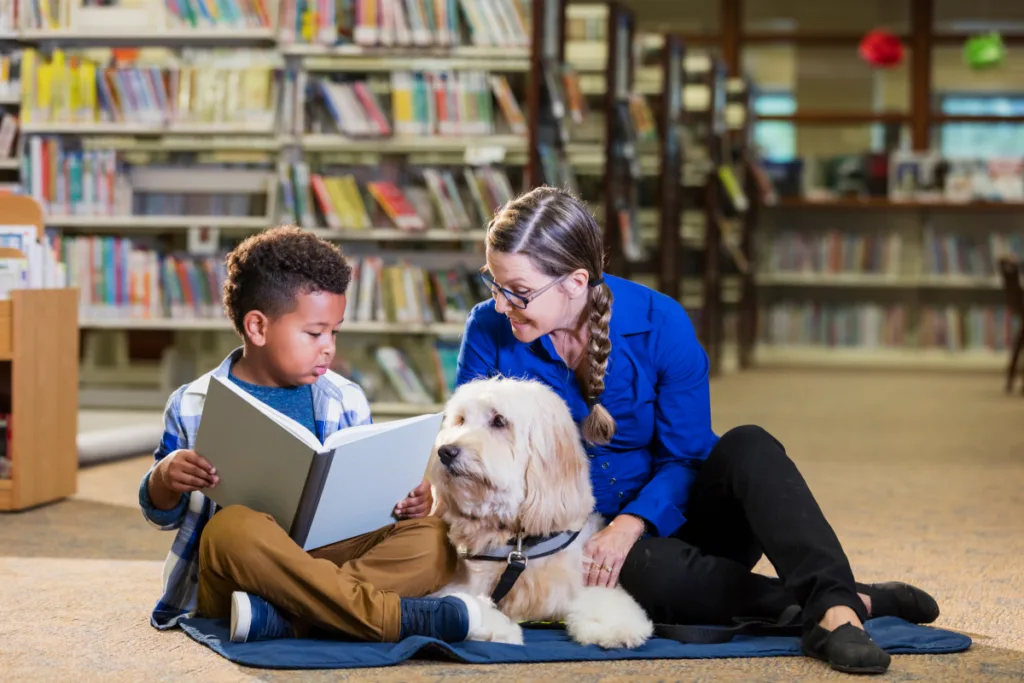
Children with autism can connect with their schoolmates thanks to autism support dogs, which can help them feel more confident.
Dogs also offer unconditional love and companionship, which can help autistic people with their communication abilities and emotional regulation.
Autism service dogs are trained to prevent autistic children from escaping and can find them if they do.
They can also stop bad behavior or warn the parents of an autistic child about a potentially dangerous circumstance.
Autism service dogs should carry contact information and emergency procedures if their partner is a young child or is nonverbal.
Dogs That Detect Diabetes
These service dogs have been trained specifically to warn their owners of potentially fatal blood sugar highs and lows (hyperglycemia and hypoglycemia).
Whenever the dog cues, the owner knows to check their blood sugar levels, administer insulin, or consume glucose to bring their levels back into balance.
Diabetes alert dogs give their owners a greater sense of independence and security, just like other service dogs do.
When their owner needs medical attention, diabetic alert dogs are typically also trained to alert neighbors or sound an alarm.
Some dogs are even taught to use a special K-9 alert phone to dial 911 if they are left alone at home.
Additionally, like service dogs for autism, diabetic alerting dogs dogs should have emergency protocols in their vests so that first responders are aware of what to do.
Guide dogs
Guide dogs, perhaps the most well-known variety of service animals, aid people who are blind or have low vision in navigating their surroundings.
Instead of a vest, these dogs typically wear a specialized harness with a handle for their owner to hold.
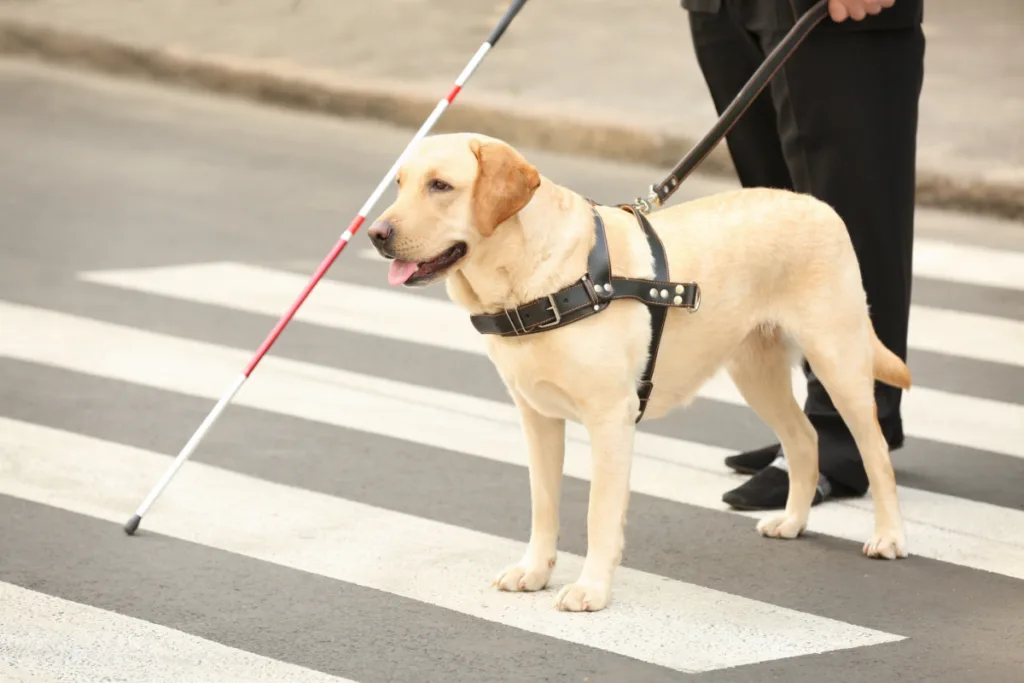
Guide dogs engage in what is referred to as selective disobedience, unlike other service animals.
In other words, they follow orders but still make decisions based on their own evaluation of a situation.
For instance, even if their owner orders them to cross the street, a guide dog will not comply if cars are approaching.
German Shepherds, Golden Retrievers, and Labradors are frequently used in in this role.
Labradoodles or Poodles, both of which are hypoallergenic, are sometimes a viable option for couples who have allergies, as these are also suitable guide dogs.
Hearing Service Dogs
Hearing dogs are trained to help their deaf and hard-of-hearing partners, as their name implies.
The dog will alert the owner and lead them to the noise when it detects a specific cue.
These indicators can be anything from smoke or fire alarms to doorbells, knocking on doors, phones, alarm clocks, and even the owner’s name.
Hearing service dogs increase their partners’ independence and awareness both inside and outside the home, just like other support dogs do.
Labradors, Cocker Spaniels, Golden retrievers, and Poodles are among the most popular hearing service dog breeds.
Assistance Dogs for the Disabled (Mobility)
Mobility assistance dogs are a common resource for people with disabilities who need assistance with daily tasks.
This involves carrying things back, opening doors, activating automatic door locks, and turning on lights.
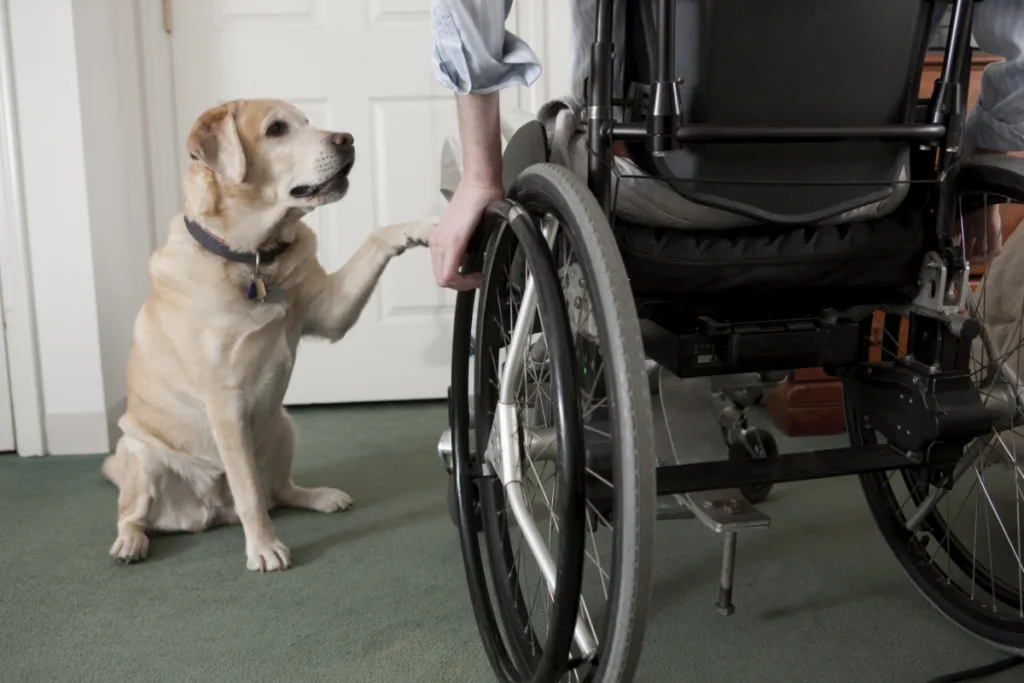
Typically, mobility support dogs are paired with individuals who have:
- injury to the spinal cord
- brain trauma
- muscular dystrophy
- joint problems such as arthritis, Charcot joint, and diabetic hand syndrome.
- cerebral palsy
Some dogs that provide mobility assistance are trained specifically to support people who have balance problems.
In general, bracing dogs weigh 55 pounds or more and must be strong enough to support their owner, and they frequently wear custom-made harnesses that enable them to do so.
Additionally, some canines that provide mobility assistance are trained to support wheelchair-bound owners.
They can help with transfers to chairs, beds, or bathtubs as well as open doors and retrieve objects.
If they have a special harness on, they may be able to assist in pushing the wheelchair of their owner.
Psychological Service Dogs
These dogs are trained specifically to assist people with conditions like post-traumatic stress disorder, anxiety, and depression.
When their owner is about to experience unpleasant symptoms like an anxiety attack or a flashback, they can sense this shift in their owner and react accordingly.
Service dogs for PTSD, depression, and anxiety have numerous advantages.
People with depression and/or anxiety may feel compelled to take care of themselves and engage with the outside world if they own a service dog.

Veterans who frequently experience PTSD can also benefit from service dogs.
In order to protect their owner’s privacy, psychiatric service dogs can act as a physical barrier between them and other people.
Additionally, support dogs can give their owners more confidence when they enter their homes.
The most common kind of service dog for PTSD is a psychiatric dog.
It’s crucial to keep in mind that therapy dogs and emotional support dogs are not the same as psychiatric service dogs.
They undergo extensive training, just like other service dogs, and aren’t regarded as pets by the law.
Seizure Alert Service Dogs
These service dogs support people prior to, during, and following a seizure. Their assistance and support may include:
- locating assistance for themselves or dialing 911 using a K-9 alert phone.
- assisting their partner after a seizure to regain consciousness.
- moving their owner’s body if they are having a seizure in a dangerous area.
- using deep pressure stimulation to shorten the length of their owner’s seizure.
- supplying their owner with medication as they recover from a seizure.
What Qualities Are Important for a Service Dog to Have?
Although competent service dogs are available in a variety of shapes, sizes, and breeds, the majority of them share certain characteristics. Let’s now take a look at what these are.
Intelligence
It is not necessary for your average pup to be particularly intelligent; it is sufficient for them to follow you about, show you affection, and occasionally do something adorable!
However, service dogs frequently have to complete difficult tasks that call for a high level of intellect. So, the majority of the best service animals are intelligent.
Friendly Attitude
Your service dog must be at ease and sociable among other people and animals because they will frequently be working in public places.
Dogs that are overly protective may make fine guard dogs or family pets, but they are rarely good candidates for service, therapy, or emotional support work.
Service and support dogs must have a calm demeanor in order to prevent distractions when their owners are out in public.
This includes avoiding dogs that run, jump, or play at unsuitable times, as well as dogs that are sensitive or easily spooked.
Dedicated to Work
While some dogs are eager to work alongside their owners, others are content to lay around the house and get cuddled and pampered all day long.
If you need an emotional support dog, you may be able to get by with a dog that likes pampering, but a strong work focus is essential when selecting a service dog.
Ability to Form Tight Bonds
Even though independent dog breeds can be great in some situations, most good service and support dogs are affectionate and form strong bonds with their owners.
Additionally, since you’ll be relying on your dog quite a bit, it will be a better choice to get a dog that will form a close bond with you – you two are in this together!
Calm and Collected Demeanor
Service and support dogs must have a somewhat calm demeanor so that they do not cause disruptions in public.
This includes avoiding dogs that jump, run or play at unsuitable times, as well as dogs that are sensitive or easily spooked.
The Best Breeds for Use as Service Dogs
Now that we’ve explained some important differences, we can move on to the best dog breeds for working in a service dog capacity.
The list of dogs below is in no particular order, as each person who may benefit from these dogs will have unique needs of their own.
It is important that a person in need of a service dog is matched with the most appropriate breed for their specific circumstance.
German Shepherd
German Shepherds are widely used as police dogs and are most frequently linked with guard and protection service. However, they also possess the qualities needed to make good service dogs.
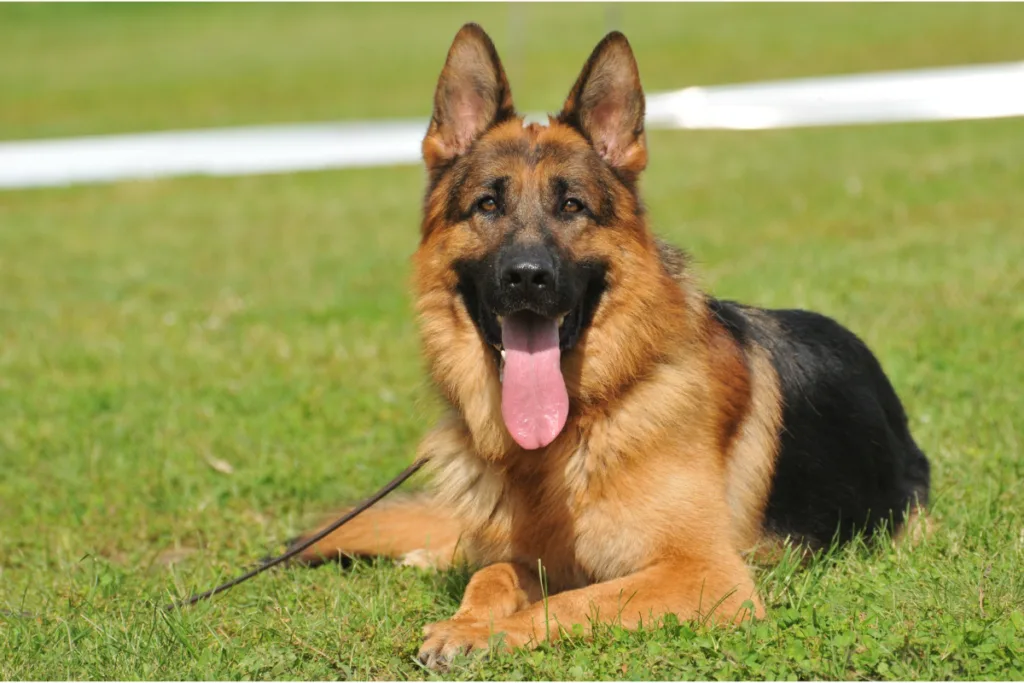
Be sure to read: Why Are German Shepherds Good Police Dogs?
Given their intelligence, good manners, and simplicity of training, German Shepherds are the ideal breed to choose for a service dog. They almost always form extremely close relationships with their owners as well.
Also, because German Shepherds are extremely versatile, they are often the first choice for those in need of a service dog.
In addition to being alert enough to recognize when their owner is feeling concerned, having enough size and power to help a person move around, German Shepherds also have a keen sense of smell, making them ideal for checking blood sugar levels for people living with diabetes.
Great Dane
Given their enormous size and power, Great Danes are particularly well-suited for various service activities.
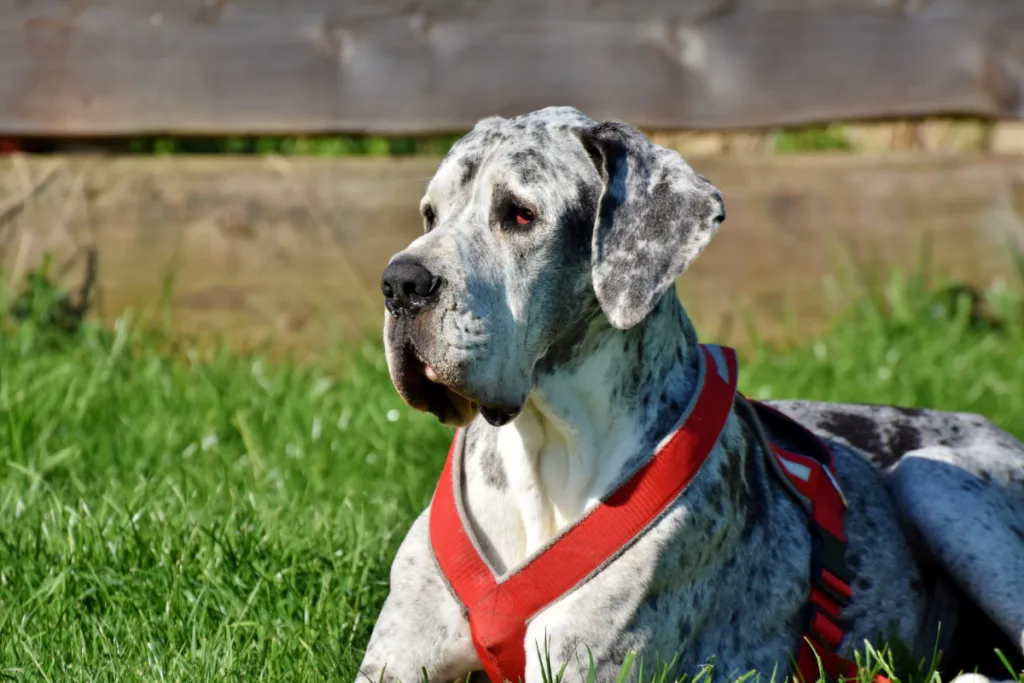
They frequently make excellent mobility support dogs, making them useful for people who may need aid standing or maintaining their balance.
And because of the their calming and comforting nature, they make excellent service dogs for people who require emotional support.
Great Danes are normally rather sociable with outsiders, but those who have been trained for service work will always keep their attention on their owner.
Keep in mind, however, that Great Danes are also great slobberers, so anyone thinking of this breed for service work really needs to ask themselves if this is something that they can live in harmony with.
Bernese Mountain Dog
Bernese Mountain Dogs have many of the most important characteristics to look for in a service dog, such as a sociable temperament, above average intellect, and a great work ethic.
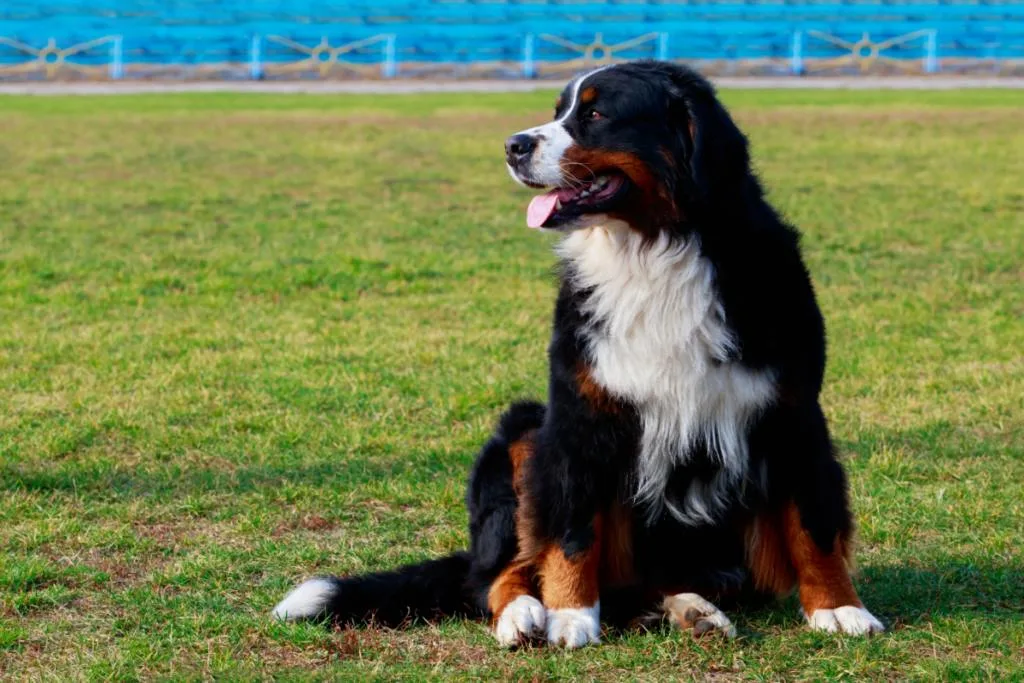
In addition to being large and strong enough to perform some physical tasks, they are also intelligent enough to learn how to perform complex tasks to assist their owners.
Furthermore, the Bernese Mountain Dog is a relatively easy dog to care for, making them an ideal option for first-time owners.
They will still require training, but are one of the best types of service dogs available.
Keep in mind, however, that Bernese Mountain Dogs aren’t recommended for hot climates due to their thick coats.
Additionally, they shed a lot, so make sure these aren’t issues before bringing one into your home. They also require a lot of space to move, jump, and play, which makes them rather unsuitable for apartment living.
Border Collie
Given that Border Collies are sometimes regarded as the world’s smartest breed, it is not unexpected that they make for outstanding service dogs.
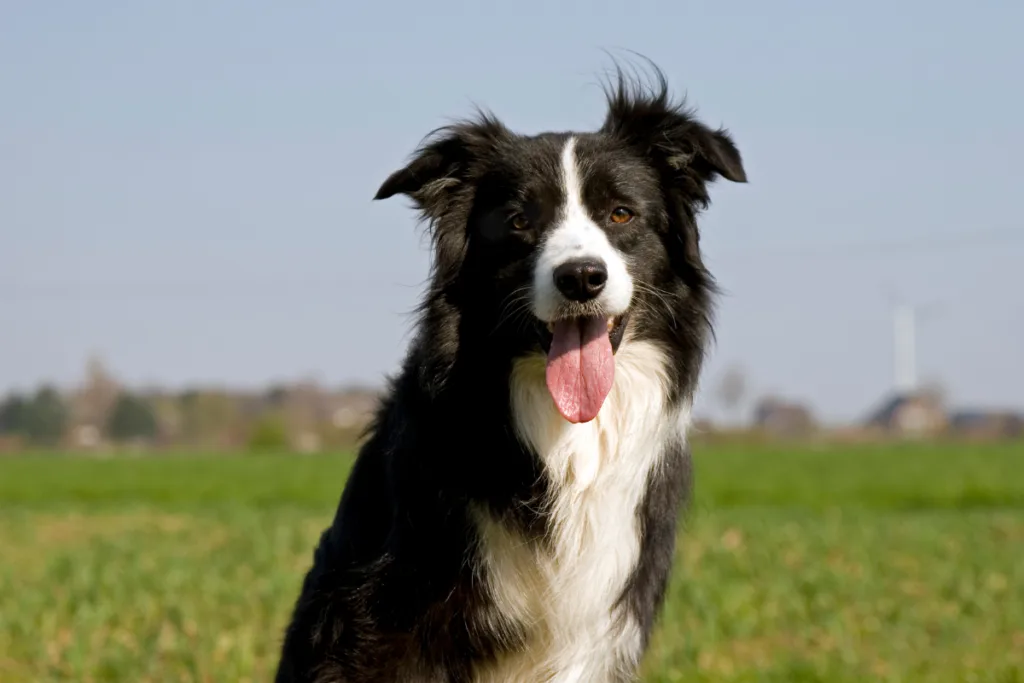
They are simple to train, and they all have one thing in common – they live to work. It is who they are!
Border Collies get along rather well with children, although they may, and by “may” we mean “will”, occasionally “herd” kids!
This can cause them to unintentionally knock over toddlers, so they might not be the greatest choice for people who are constantly around children that the dog hasn’t been introduced to before.
Before bringing a Border Collie into your home, make sure you are able to provide plenty of opportunities for exercise and engaging toys that stimulate their brain.
Border Collies are a high-energy breed and can become mischievous if understimulated. A wonderful way to keep a Border Collie engaged is with a puzzle toy.
The Outward Hound Hide A Squirrel Plush Dog Toy Puzzle has been a long-time favorite of our readers, and is ideal for Border Collies, as it draws on their creativity and intellect.
Standard Poodle
Poodles are often mistaken for stuck up dogs with fancy haircuts, but they are actually very intelligent and competent dogs who love to work. They make for excellent service dogs because they are well-mannered and simple to train.
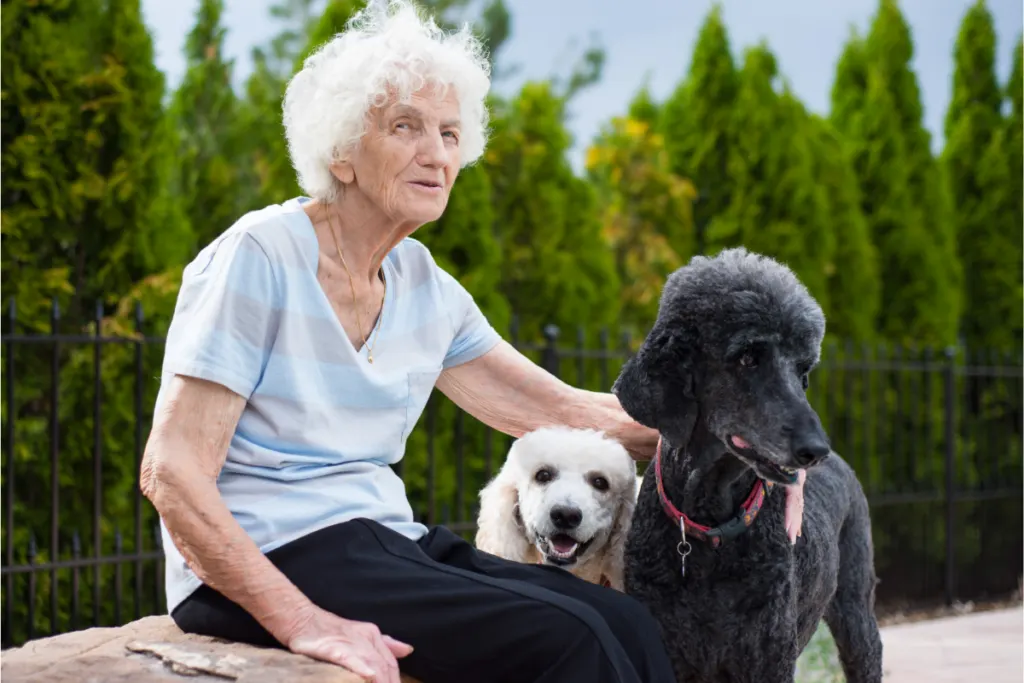
Poodles come in a variety of sizes, with standard poodles being the largest.
Because they are larger and more robust than toy or miniature poodles, the majority of people who intend to use a poodle for service work should probably choose a standard Poodle.
Smaller Poodle breeds, however, might be simpler to carry in crowded places if your service dog doesn’t need to perform any particularly physically demanding tasks.
A smaller Poodle will also be easier to walk and clean up after, which is important a person with limited mobility.
Golden Retriever
It shouldn’t come as a surprise that golden retrievers make great service dogs given their strong similarities to Labs. Most of them love working, and they are intelligent, amiable, and simple to train.
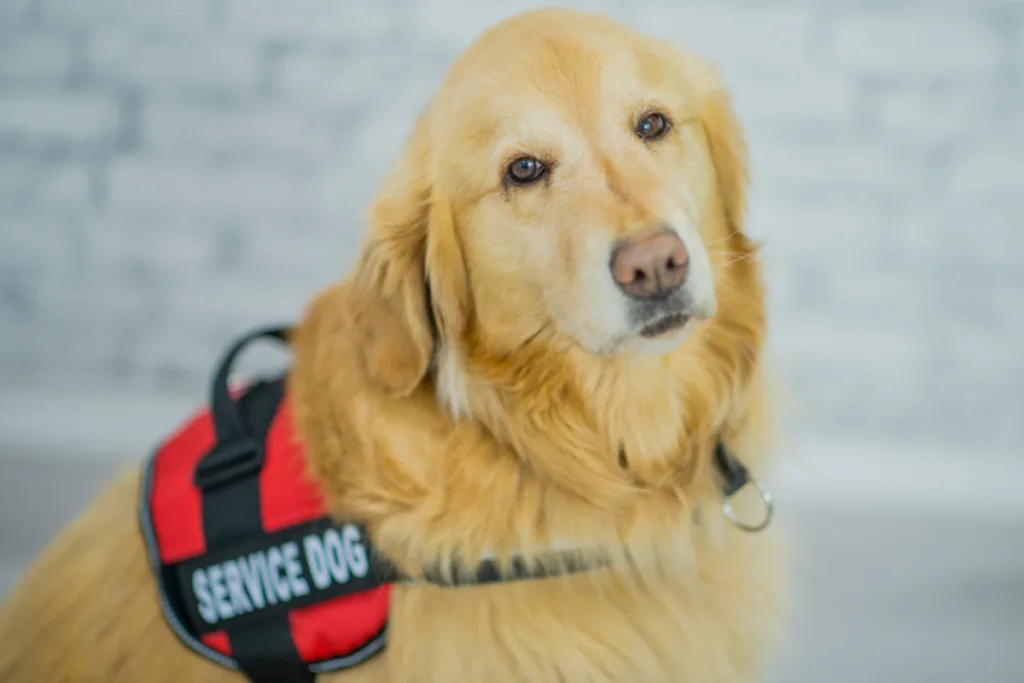
Golden Retrievers look gentle and loving despite being fairly large dogs, which works very well in their favor in keeping people around them at ease.
This allows them to be among the best service dogs for PTSD and an excellent breed for lowering anxiety. They excel in emotional support work.
However, they are also capable of doing more strenuous tasks like bringing objects to wheelchair-bound people or guiding owners who are blind or have limited vision.
Please keep in mind that Golden Retreivers shed a lot, so consider whether you can live with this before getting one of these adorable canines!
Labrador Retriever
Of the most well known dog breeds is the Labrador retriever. This is for good reason.
They are highly capable and extremely versatile, making for excellent service dogs.
More on this here: Here’s Why Labradors Are So Popular The World Over
The majority of Labrador Retrievers are absurdly amiable and cheerful. Try to picture a Lab in your mind, and a happy dog with a wildly wagging tail (say that three times!) is what most likely comes to mind!
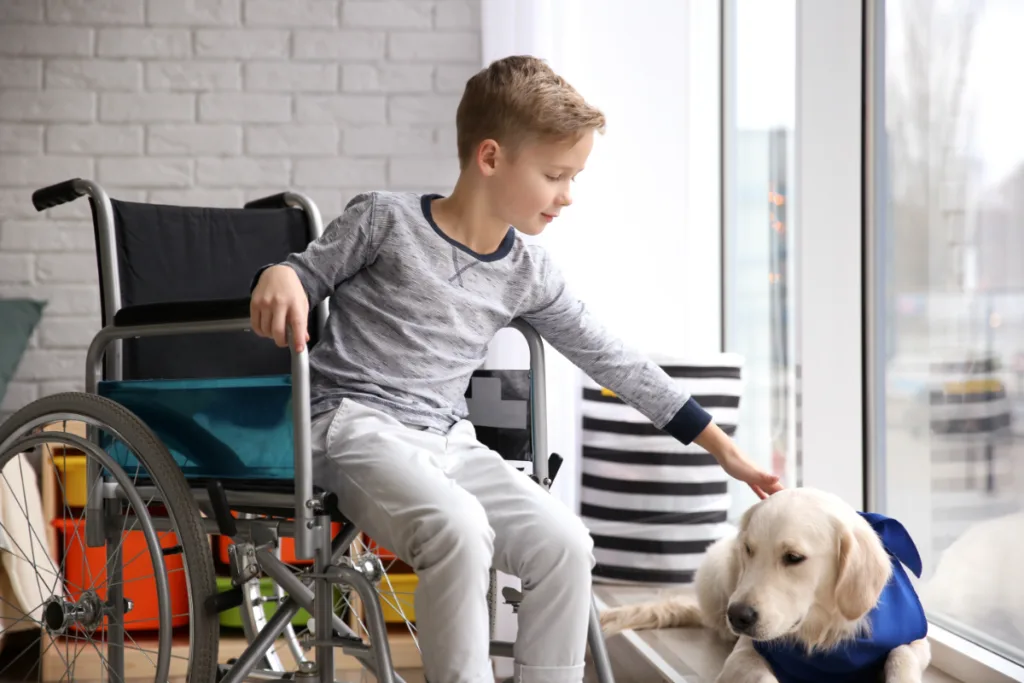
Additionally, Labradors frequently form very close bonds with their owners and love working.
They are also strong enough to do some heavy lifting, which is ideal for people who need mobility assistance.
While Labs can help their owners in a variety of ways, they’re especially helpful for those with limited mobility and need assistance picking up objects or holding them in a specific manner.
Aside from their inherent retrieving instinct, Labs also have what is known as a “soft mouth,” which allows them to lightly grasp objects with their teeth.
This attribute is drawn upon when they are working as hunting dogs and retrieving birds, as it is important that they do not damage the bird they are retrieving.
As far as service work goes, this characteristic makes it more likely that they won’t harm the items that they fetch for their owners.
Boxer
Boxers can serve as service dogs for people with a variety of disabilities. They are typically friendly and gentle dogs that get along well with people of all ages.
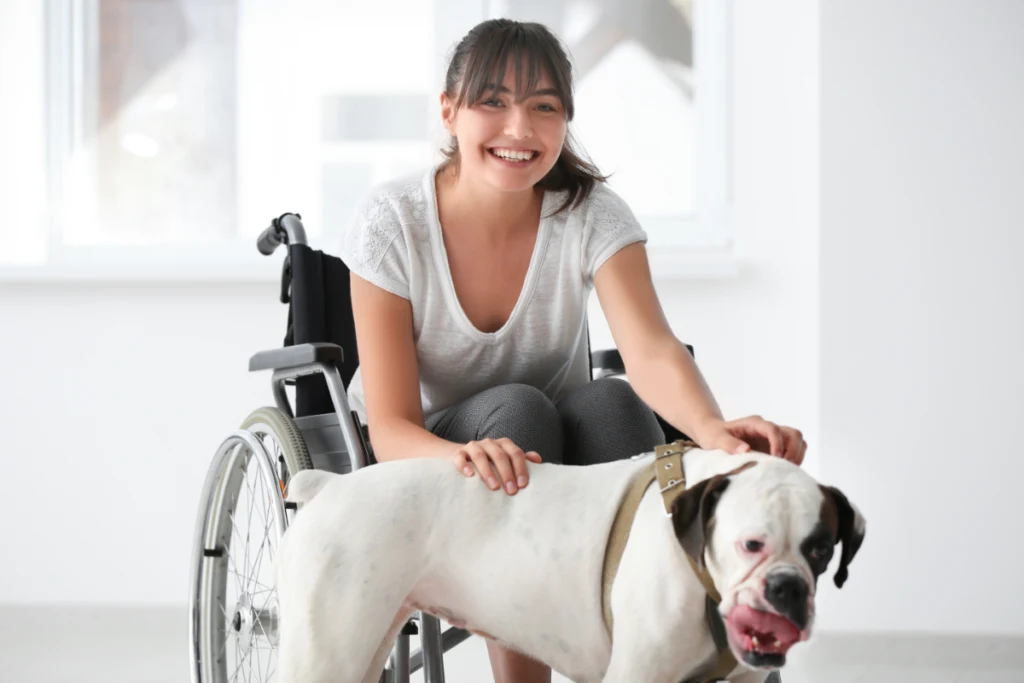
The majority of boxers are at ease in both big and small groups, and they can be trained to maneuver through a crowd.
Boxers are a smart breed with the ability to learn a variety of tasks, especially those related to working as a psychiatric service dog.
This makes them a good choice for families with young children or noisy households, as they are less prone than other breeds to lose patience in hectic or chaotic environments.
However, owning a boxer can be challenging if you’re not very physically active and don’t have a way to exercise your service dog.
They have a lot of energy and should exercise frequently to stay in good health, and, in turn, live up to their full potential as service dogs.
Cavalier King Charles Spaniel
While cavalier King Charles Spaniels may not be the best choice for physically demanding tasks, they have a tendency to pay close attention to their handlers’ emotional needs.
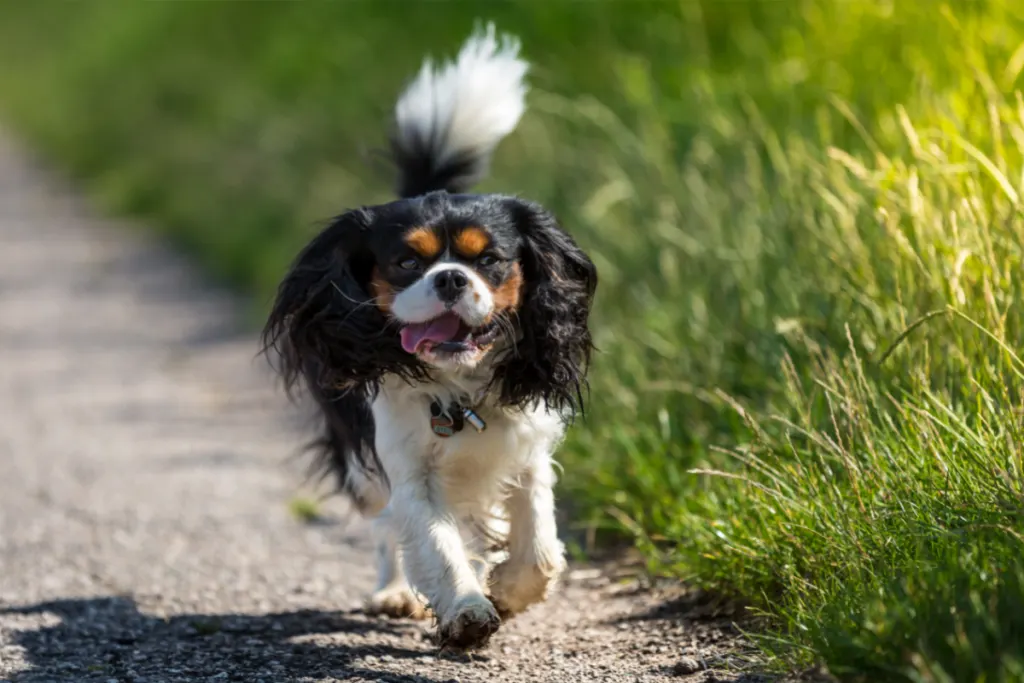
They are frequently trained as psychiatric service dogs to assist people with PTSD, OCD, depression, anxiety, and other mood disorders.
King Charles spaniels are affectionate lap dogs that enjoy constantly being with their owners. In doing so, they develop a strong emotional attachment to them.
This is a great quality for psychiatric service dogs, especially for people who require additional emotional support on top of the dog’s regular duties.
These dogs are not as demanding or high-energy as some of the larger breeds and are better suited as lap dogs with little need for exercise.
Pomeranian
While the majority of service dogs are larger breeds, the Pomeranian is a small breed that is quite capable and is often used as a service dog.
While a Pomeranian can’t help you walk or maintain your balance, they can be trained to do a variety of other tasks that don’t call for a lot of strength or size.
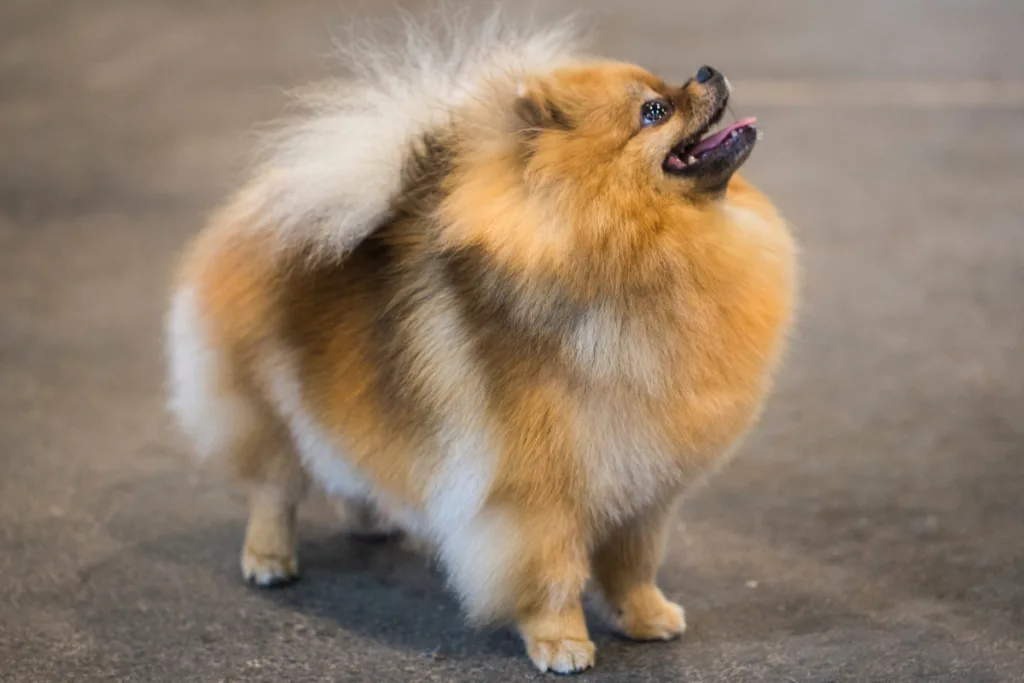
They are also very obedient to their owners, and the majority of them get a lot of pleasure out from working.
The Pomeranian is a great option for owners who require the assistance of a service dog but do not lead an active lifestyle that is conducive to larger breeds.
Pomeranians are small enough to fit in a small carrier or backpack, which makes them ideal for owners to take along wherever they go. And, unlike larger breeds, it’s highly unlikely that a Pomeranian will frighten anyone.
People being frightened by service dogs is a serious issue.
They may make sudden moves or sounds that frighten the service dog and cause it to sometimes pull their owners off balance.
While this will not likely happen with a well-trained service dog, a large breed service dog in training is most certainly at risk for this happening to them and their owner may be injured in the process.
Yorkshire Terrier
Contrary to popular belief, Yorkshire Terriers can be brave and curious, and are often eager to try new things. This makes them a good option for a service dog in situations where physicality is not necessary.
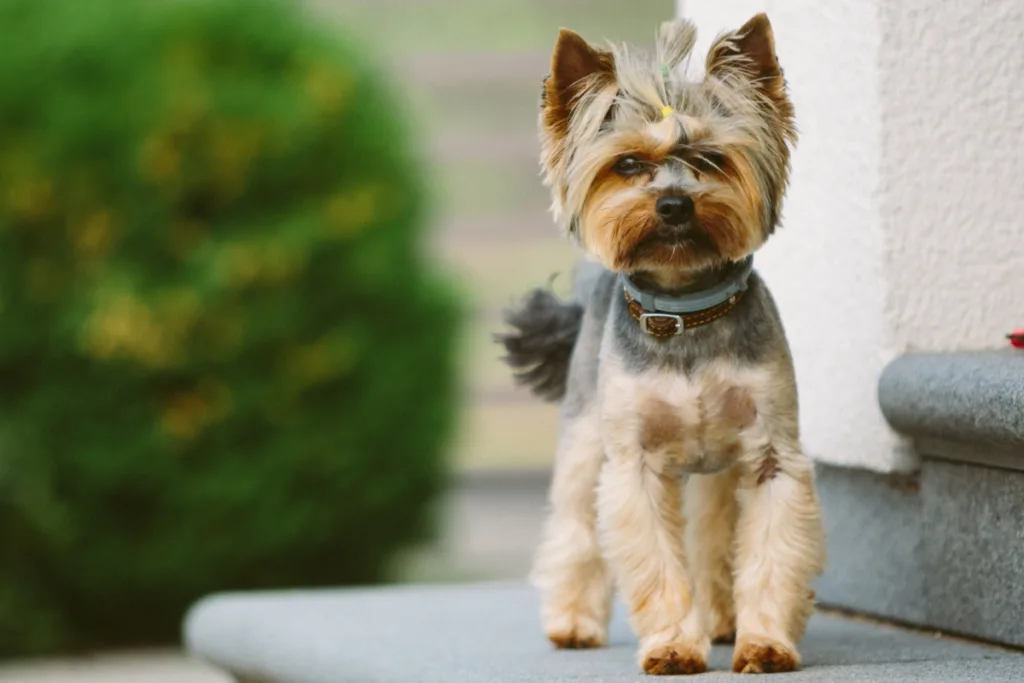
They are useful for tasks such as getting medications in an emergency or pressing an alert button, or bark to get the attention of others if they sense something is seriously wrong.
Ever notice that little dogs bark up a storm? Of course you have!
Many of us find this incredibly annoying, but this is part of what makes a Yorkshire Terrier an effective service dog. Sometimes it pays to be the loudest one in the room!
Pit Bull
Although there is a misconception about the breed that is often unjustified, Pit Bulls make excellent service dogs.
Unfortunately these dogs are feared by many people, but these fears are unfounded and are the result of sensationalized media coverage.
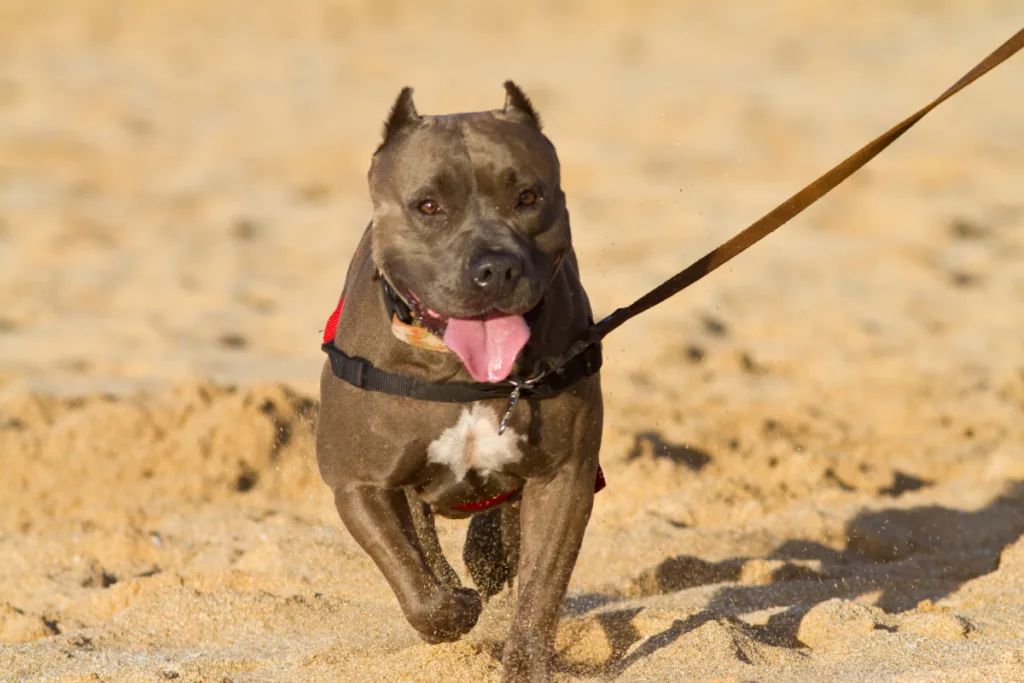
Pit bulls are among the friendliest dog breeds, and when properly trained are typically very well-behaved when around people, including children.
Additionally, most Pit Bulls have a strong desire to work, are very intelligent, and take to training quite well. As with most service dogs, they love to please their owners, and will work tirelessly to that end.
Final Thoughts
This is a good time to give your eyes a rest and for you to smile—below is a video of what a service dog isn’t!
Any breed of dog has the potential to become a service dog, although some are more common or better suited to do so than others.
Common breeds like German Shepherds, Border Collies, Labrador and Golden Retrievers may have some qualities that make them more suitable candidates to the job at hand, but these can almost always be trained.
As long as the dog has a pleasant demeanor, is amenable to training, is simple to care for, and is intelligent, it can make for a very good service dog.
However, it is very important to make sure the dog you are considering can handle the rigorous training that all service dogs must undergo.
Depending on the kind of service dog you require, size will be important, but aside from that, most service tasks can be taught to dogs with good temperaments.
